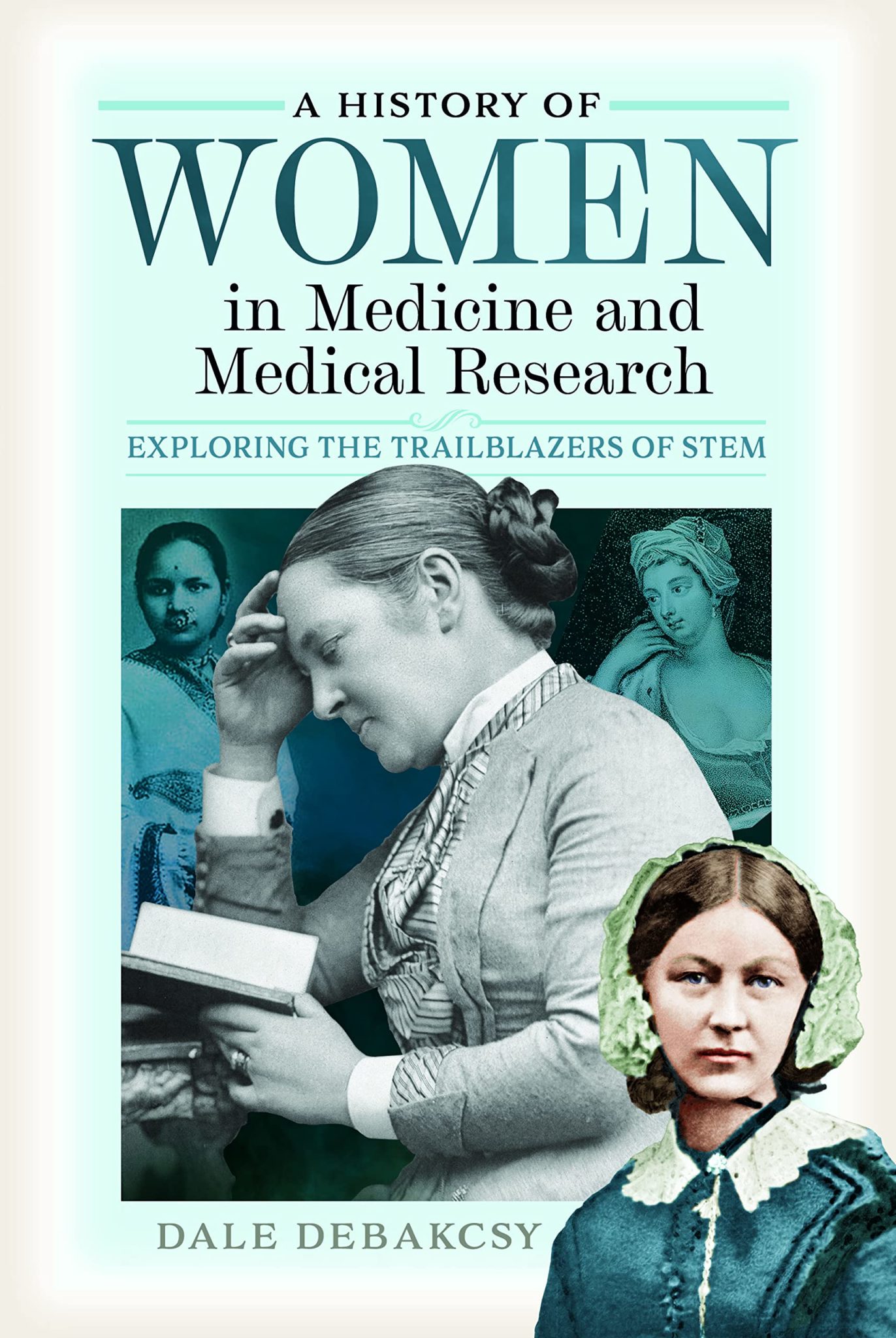Arpan K. Banerjee
Solihull, UK

Cover of A History of Women in Medicine and Medical Research: Exploring the Trailblazers of STEM by Dale DeBakcsy
Research and writing on women’s contributions to science and medicine are needed and welcome. Books about science and medical advances have often concentrated primarily on men’s achievements and have a distinctly Western bias. This new book on the history of women in medicine and medical research is a superb addition to the literature.
In antiquity and the Middle Ages, women made advances in science and medicine, though we are often not familiar with their names. Brief portraits in an early chapter include Artemisia of Caria (in western Anatolia) in the fourth century BCE who was a pioneer of herbal medicine. Metrodora in the second century BCE wrote the first known medical text by a woman. Titled On the diseases and cures of women, her work boasted sixty-three chapters and was one of the earliest texts on gynecology. In the Middle Ages, St. Hildegard of Bingen in the twelfth century is better remembered today as a musical composer and mystic, but she also wrote about plants and minerals that could be used to maintain human health.
Lady Montague, who contributed to the elimination of smallpox in the eighteenth century, should likewise not be forgotten. She introduced Britain to variolation after having witnessed it in her travels to Turkey. An important and well-connected figure of her time, without her efforts, smallpox vaccination may not have happened.
Throughout the Renaissance and into the nineteenth century, women experienced much opposition to acquiring an education in science or medicine. It was only in the late nineteenth century that Western medical schools started to admit women. In the US, the New England Female Medical College was opened in 1848. Harvard Medical School did not admit women until 1945. In London, Sophia Jex-Blake was instrumental in founding the London Medical School for Women in 1874, which later became the Royal Free Hospital. Elizabeth Garrett Anderson was another British pioneer who faced much opposition. Unable to attend medical school, she nevertheless qualified as a doctor through a loophole in the Apothecaries exam and shocked everyone by receiving the highest score.
Women’s contributions in fighting plague in India are little remembered today. Dr. Edith Pechey Phipson, a friend of Sophia Jex-Blake, went to Bombay to help with a plague outbreak in 1896. She arrived at Cama Hospital, a philanthropic venture supported by visionary Behramji Malabari, who wanted to improve the education and health of women. She led a hospital staffed by women and championed female medical education. Interestingly, women were admitted to medical school in Mumbai at the Grant Medical College in the late nineteenth century. Dr. Anandibai Joshi, India’s first female licensed medical doctor, studied medicine at the Women’s Medical College of Philadelphia and was determined to serve her country. Unfortunately, she died of tuberculosis in 1887 at the age of twenty-one before she could fulfill her ambition.
Other notable contributors to science and medicine in the book include Margaret Sanger and her work on contraception; Helen Taussig, the pioneering pediatric cardiologist at Johns Hopkins Hospital; Tu Youyou, the 2015 Nobel Laureate and her work with artemisinin as a treatment for malaria; Rosalind Yalow and her work on radioimmunoassay; and Françoise Barré-Sinoussi, a virologist, AIDS researcher, and the 2008 Nobel Laureate in Medicine.
The book covers thirty-one pioneers in depth and includes over 100 smaller portraits of women in science and medicine. It is well researched and includes illustrations and a useful bibliography for further reading. The author, who has previously written extensively about women’s contributions in STEM subjects, conveys his passion and scholarship in this magnificent and inspiring volume.
A History of Women in Medicine and Medical Research: Exploring the Trailblazers of STEM
Dale DeBakcsy
Pen and Sword Books Ltd, 2022
ISBN 9781399068963
ARPAN K. BANERJEE qualified in medicine at St Thomas’s Hospital Medical School, London. He was a consultant radiologist in Birmingham 1995–2019. He was President of the radiology section of the RSM 2005–2007 and on the scientific committee of the Royal College of Radiologists 2012–2016. He was Chairman of the British Society for the History of Radiology 2012–2017. He is Chairman of ISHRAD. He is author/co-author of papers on a variety of clinical, radiological, and medical historical topics and seven books, including Classic Papers in Modern Diagnostic Radiology (2005) and The History of Radiology (OUP 2013).
